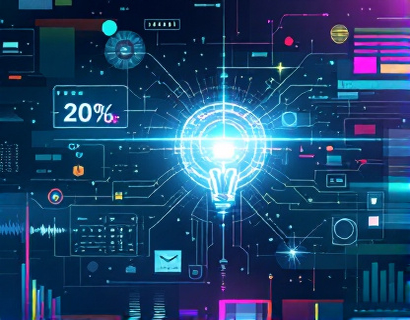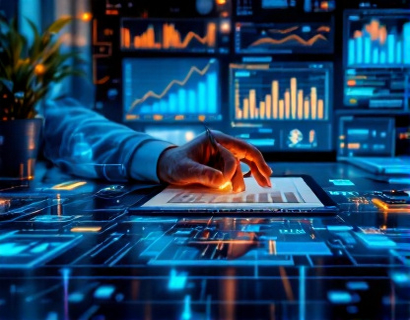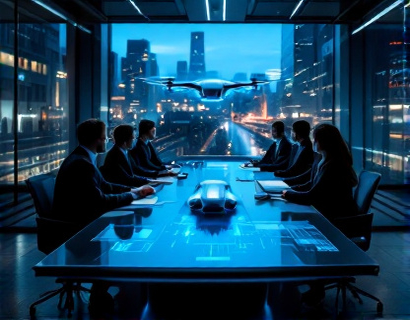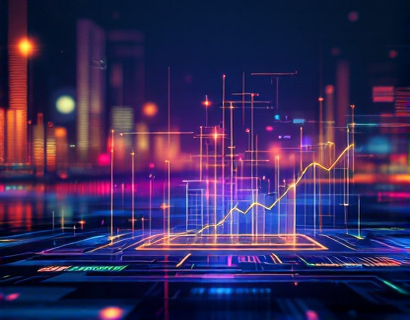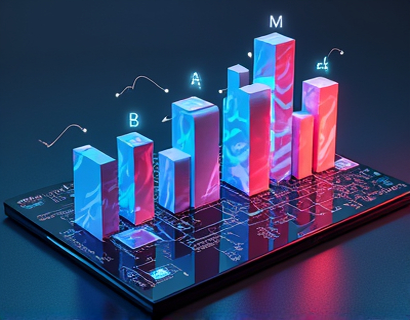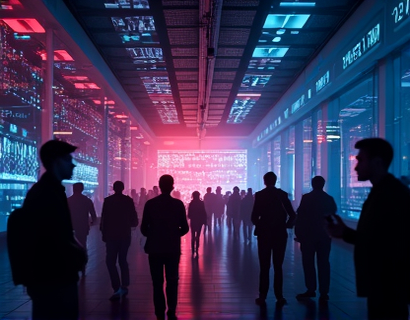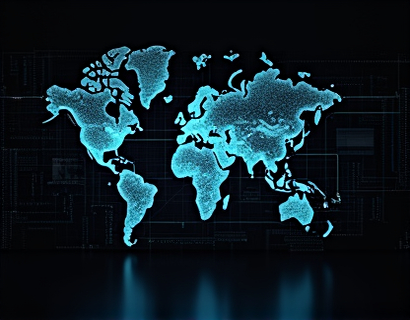Exploring the Synergy of Crypto and AI: A New Era of Digital Innovation
The intersection of cryptocurrency and artificial intelligence (AI) is giving rise to a new paradigm in digital experiences. This fusion is not just a technological curiosity but a transformative force that is reshaping how we interact with digital platforms and services. As tech-savvy individuals increasingly look towards the future, understanding the potential of this synergy becomes crucial. This article delves into the ways in which AI and crypto are converging to create enhanced, more secure, and more efficient digital experiences.
The Foundations of Cryptocurrency and AI
To appreciate the impact of merging crypto and AI, it's essential to first understand the fundamentals of each technology. Cryptocurrency, since its inception with Bitcoin in 2009, has revolutionized the way we think about money and transactions. It operates on blockchain technology, a decentralized ledger that ensures transparency, security, and immutability. This technology has paved the way for a myriad of applications beyond digital currencies, including smart contracts, decentralized finance (DeFi), and non-fungible tokens (NFTs).
Artificial intelligence, on the other hand, involves the simulation of human intelligence processes by machines, particularly computer systems. These processes include learning (the acquisition of information and rules for using it), reasoning (using rules to reach approximate or definite conclusions), and self-correction. AI has advanced significantly through machine learning and deep learning, enabling systems to perform tasks that traditionally required human intervention, such as image recognition, natural language processing, and predictive analytics.
Enhancing Security with AI in Crypto
One of the most significant benefits of combining AI with cryptocurrency is the enhancement of security measures. Traditional cybersecurity methods often struggle to keep up with the evolving landscape of cyber threats. AI brings a dynamic and adaptive approach to security, capable of detecting and responding to threats in real-time. For instance, AI algorithms can analyze patterns in blockchain transactions to identify potential fraud or anomalies, providing a robust defense against cyber attacks.
Smart contracts, a cornerstone of blockchain technology, can also be fortified with AI. By integrating machine learning models, smart contracts can automatically adjust their terms based on real-time data, ensuring that all parties adhere to the agreed-upon conditions. This not only reduces the risk of human error but also increases the efficiency and reliability of contract execution.
Optimizing Blockchain Performance with AI
Blockchain technology, while revolutionary, faces challenges related to scalability and transaction processing speed. AI can play a pivotal role in optimizing blockchain performance. Machine learning algorithms can be used to predict network congestion and optimize resource allocation, ensuring smoother and faster transaction processing. Additionally, AI can help in the development of more efficient consensus mechanisms, reducing the computational power required for validating transactions and thereby lowering energy consumption.
Another area where AI can enhance blockchain is in the management of decentralized networks. AI-driven tools can monitor network health, identify bottlenecks, and propose solutions to improve overall network efficiency. This proactive approach to network management can significantly enhance the user experience, making blockchain-based applications more viable for widespread adoption.
Personalized User Experiences through AI
The integration of AI in cryptocurrency platforms can also lead to more personalized user experiences. By leveraging user data and behavior patterns, AI can provide tailored recommendations for investments, wallet management, and other financial services. For example, AI-powered chatbots can offer real-time advice and support, helping users navigate complex crypto markets with greater confidence.
Furthermore, AI can enhance the user interface and experience (UI/UX) of crypto applications. Machine learning algorithms can analyze user interactions to optimize the design and functionality of apps, making them more intuitive and user-friendly. This personalized approach not only improves user satisfaction but also increases engagement and retention.
Decentralized AI: A New Frontier
The convergence of crypto and AI extends beyond enhancing existing technologies; it also gives birth to new paradigms such as decentralized AI. In a decentralized AI system, data and computational resources are distributed across a network of nodes, eliminating the need for centralized control. This approach not only enhances privacy and security but also democratizes access to AI technologies.
Decentralized AI platforms can leverage blockchain to create a trustless environment where users can contribute their computational power and data in exchange for cryptocurrency rewards. This model incentivizes participation and fosters a collaborative ecosystem where the collective intelligence of the network drives innovation. Such platforms can democratize AI development, allowing smaller entities and individuals to access powerful AI tools without the need for substantial resources.
AI-Driven Crypto Asset Management
The intersection of AI and crypto has also revolutionized asset management. AI algorithms can analyze vast amounts of market data to identify trends, predict price movements, and optimize trading strategies. This level of analysis is often beyond the capabilities of human traders, leading to more informed and profitable investment decisions.
Robo-advisors, powered by AI, can manage crypto portfolios by automatically rebalancing assets based on predefined criteria. These tools can adapt to changing market conditions in real-time, ensuring that portfolios remain optimized for the user's risk tolerance and investment goals. The use of AI in crypto asset management not only enhances efficiency but also makes high-quality financial services more accessible to a broader audience.
Challenges and Considerations
While the potential of merging crypto and AI is immense, it is not without its challenges. One of the primary concerns is the regulatory landscape. As both crypto and AI are relatively new and rapidly evolving fields, regulatory frameworks are still catching up. Ensuring compliance with existing laws while advocating for supportive regulations is crucial for the sustainable growth of these technologies.
Another challenge is the ethical use of AI. The deployment of AI in crypto must be guided by ethical principles to prevent misuse and ensure fairness. Issues such as data privacy, algorithmic bias, and the potential for AI to be used in malicious activities must be addressed proactively. Transparency and accountability in AI systems are essential to build trust and foster widespread adoption.
Future Prospects: The Next-Gen Digital Ecosystem
Looking ahead, the synergy between crypto and AI holds the promise of creating a more interconnected, secure, and efficient digital ecosystem. As these technologies continue to evolve, we can expect to see more innovative applications that push the boundaries of what is possible. From decentralized autonomous organizations (DAOs) to advanced AI-driven financial instruments, the future is bright for those who embrace this transformative combination.
The integration of crypto and AI is not just a technological advancement but a cultural shift towards a more decentralized and data-driven world. As tech-savvy individuals and enthusiasts, staying informed and engaged with these developments is key to harnessing their full potential. The next-gen digital ecosystem is here, and it is powered by the combined forces of cryptocurrency and artificial intelligence.









